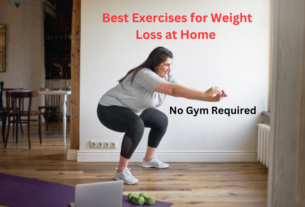Yoga has become increasingly popular in recent years, and for good reason(Yoga for Beginners). This ancient practice offers numerous benefits, both physically and mentally, making it an excellent addition to any fitness routine. However, for those who are new to yoga, it can seem overwhelming. With so many different styles, poses, and terms to learn, getting started may feel like a daunting task.
But don’t worry—yoga is for everyone, regardless of age, fitness level, or flexibility. This guide is designed specifically for beginners, offering a clear, step-by-step approach to help you start your yoga journey with confidence.
Why Practice Yoga?
Before diving into the specifics of how to start, let’s take a moment to discuss why yoga is worth the effort. Practicing yoga regularly offers a range of benefits, including:
- Improved Flexibility: Yoga involves a variety of stretches that help to increase flexibility in your muscles and joints.
- Increased Strength: Many yoga poses engage different muscle groups, leading to increased strength and stability over time.
- Better Posture: By strengthening the core and improving flexibility, yoga can help to correct poor posture.
- Stress Reduction: Yoga encourages mindfulness, breathing exercises, and relaxation, which can reduce stress and promote mental clarity.
- Enhanced Balance: Both physical and mental balance are improved through yoga practice.
With these benefits in mind, let’s look at how to get started.
1. Choose the Right Type of Yoga
Yoga offers many different styles, each with its own emphasis and pace. Some are more physically demanding, while others focus more on mindfulness and relaxation. As a beginner, it’s important to choose a style that suits your needs and fitness level.
- Hatha Yoga: This is a slower-paced, beginner-friendly form of yoga that focuses on basic poses and breathing techniques.
- Vinyasa Yoga: A more dynamic and fluid practice where poses are linked together with breath. It’s a good choice if you want a more energetic practice.
- Iyengar Yoga: Known for its emphasis on precision and alignment, Iyengar yoga is a great option if you prefer a slower, more methodical practice.
- Restorative Yoga: This gentle style focuses on relaxation and stretching, using props like blankets and blocks to support the body in various poses.
- Yin Yoga: A slower practice that involves holding passive poses for an extended period to target deep connective tissues and joints.
For beginners, starting with Hatha yoga or Restorative yoga is typically recommended as these styles are slower and more focused on learning basic postures.
2. Invest in the Right Equipment
You don’t need much to start practicing yoga, but there are a few essentials that will make your practice more comfortable:
- Yoga Mat: A non-slip mat provides a stable surface for your practice, ensuring safety during poses.
- Comfortable Clothing: Wear clothes that allow you to move freely and comfortably, such as leggings or stretchy pants and a fitted top.
- Props: Beginners can benefit from props like yoga blocks, straps, and blankets, which help with alignment, support, and relaxation during stretches.
3. Learn Basic Yoga Poses
To get started, it’s important to become familiar with some of the foundational yoga poses. These poses are the building blocks of most yoga practices, and learning them will help you feel more confident and comfortable in your practice.
Here are a few basic yoga poses to start with:
Mountain Pose (Tadasana)
- Stand with your feet hip-width apart, arms at your sides, and your weight evenly distributed across both feet.
- Engage your core and lift through the crown of your head.
- Focus on your breath and maintain a steady posture.
Downward-Facing Dog (Adho Mukha Svanasana)
- Start on your hands and knees. Tuck your toes and lift your hips up and back, creating an inverted V shape with your body.
- Keep your hands shoulder-width apart and feet hip-width apart, pressing your heels toward the floor.
- Relax your head and neck, and focus on your breath.
Child’s Pose (Balasana)
- Start by sitting back on your heels, then fold forward, bringing your forehead to the floor.
- Extend your arms in front of you or rest them by your sides.
- This is a great resting pose that helps stretch the back and calm the mind.
Cat-Cow Pose (Marjaryasana-Bitilasana)
- Start on your hands and knees, with your wrists directly under your shoulders and knees under your hips.
- Inhale as you drop your belly toward the mat, lifting your chest and tailbone (Cow Pose).
- Exhale as you round your spine, tucking your chin toward your chest (Cat Pose).
- Flow between these two movements to warm up the spine.
Warrior I (Virabhadrasana I)
- Start in a standing position and step one foot back, bending your front knee.
- Stretch your arms overhead, keeping your back leg straight.
- Ensure your front knee is directly above your ankle, and hold the position for a few breaths.
Tree Pose (Vrksasana)
- Stand tall and shift your weight onto one foot.
- Place the sole of your opposite foot on your inner thigh or calf (avoid the knee).
- Bring your palms together in front of your chest or extend your arms overhead.
- Focus on maintaining balance while breathing steadily.
4. Focus on Your Breath
In yoga, the breath plays a key role in linking the body and mind. One of the first things you’ll learn is to coordinate your movements with your breath. A common breathing technique used in yoga is Ujjayi breathing, or “victorious breath.”
- Inhale through your nose, filling your lungs fully.
- Exhale through your nose, making a soft, ocean-like sound in the back of your throat.
- Focus on steadying your breath throughout the entire practice.
Breathing properly helps to enhance your concentration, improve your endurance, and reduce stress.
5. Start Slow and Set Realistic Goals
As a beginner, it’s important not to rush. Yoga is about progress, not perfection, so take your time and be patient with yourself. Here are a few tips for starting slow:
- Practice consistency: It’s better to practice yoga a few times a week rather than trying to do too much at once. Start with 20–30 minutes per session, and gradually increase the duration as you get more comfortable.
- Set achievable goals: Rather than aiming for advanced poses, focus on mastering the basics and improving your flexibility and strength over time.
- Listen to your body: Yoga should never feel painful. If you experience discomfort or pain, stop and modify the pose.
6. Join a Yoga Class or Use Online Resources
While practicing on your own is fine, joining a class—whether in person or online—can help you feel more confident. A qualified instructor can provide feedback on your form and offer adjustments that will help you improve your practice.
Many yoga studios offer beginner-friendly classes, and there are also countless online resources, including YouTube videos and yoga apps, that can guide you through different routines.
7. Stay Committed to Your Practice
As with any new endeavor, consistency is key. The more you practice yoga, the more comfortable and confident you’ll become. Over time, you’ll begin to notice physical changes such as improved flexibility, strength, and balance, as well as mental benefits like stress relief and enhanced focus.
Conclusion
Starting yoga as a beginner doesn’t have to be intimidating. With the right mindset, a few essential tools, and a commitment to learning, you can enjoy all the physical and mental benefits this ancient practice has to offer. Remember, yoga is a journey, not a destination, so take it one breath at a time and celebrate every small achievement along the way.
By following these simple steps and incorporating these tips into your practice, you’ll be well on your way to enjoying the numerous benefits of yoga.




